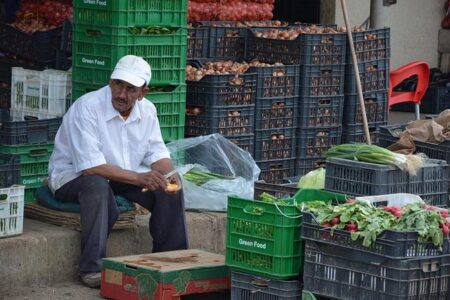Italian pasta producers are grappling with significant challenges as new U.S. tariffs have effectively doubled the cost of their products in the American market. The recent trade measures, aimed at addressing broader economic and diplomatic issues, have sent shockwaves through Italy’s renowned pasta industry, threatening both export revenues and longstanding trade relationships. As consumers in the United States face higher prices on a staple Italian favorite, producers and industry experts are weighing the potential long-term impact on one of Italy’s most iconic food exports.
Impact of Rising U.S. Tariffs on Italian Pasta Exporters
The recent hike in U.S. tariffs has sent shockwaves through the Italian pasta industry, threatening to reshape longstanding trade dynamics. Many exporters, traditionally reliant on American markets, are now grappling with increased costs that could be passed directly onto consumers. The tariffs, some reaching up to 50% on certain pasta products, disrupt carefully balanced supply chains and force producers to reconsider their pricing strategies and market focus. For small and medium-sized enterprises, these surcharges represent not just a hit to profit margins but a potential barrier to accessing one of their largest export destinations.
Industry insiders warn that the consequences extend beyond price inflation. Key challenges facing Italian pasta exporters include:
- Loss of competitiveness: Higher tariffs may make Italian pasta less attractive compared to local or alternative international brands.
- Supply chain adjustments: Exporters must navigate increased paperwork, potential delays, and renegotiations with distributors.
- Market diversification pressure: Many producers are exploring new regions to offset shrinking sales in the U.S.
| Tariff Category | Original Rate | New U.S. Tariff | Estimated Price Impact |
|---|---|---|---|
| Dried Pasta | 0% | 25% | +15-20% |
| Fresh Pasta | 5% | 50% | +40-50% |
| Organic Varieties | 3% | 30% | +25-30% |
Consumer Prices Expected to Surge Amid Trade Dispute
Italian pasta makers are bracing for a significant impact as new U.S. tariffs threaten to double the cost of their products on American shelves. The trade dispute, centered on disputes over steel and aluminum imports, has led to retaliatory measures hitting a range of Italian goods, with pasta-an iconic export-caught in the crossfire. Industry insiders warn that these tariffs will not only inflate prices but could also disrupt supply chains, forcing some producers to scale back exports or seek alternative markets.
Key ramifications include:
- Projected price increases of up to 100% for select pasta varieties.
- Potential decline in U.S. sales volume for affected producers.
- Pressure on small- and medium-sized producers who rely heavily on the American market.
- Shifts in sourcing and production as companies explore cost-effective solutions.
| Product | Current Import Tariff | New Tariff Rate | Estimated Price Impact |
|---|---|---|---|
| Durum Wheat Pasta | 5% | 20% | +80% |
| Fresh Pasta | 3% | 15% | +60% |
| Tomato Sauce (Imported) | 2% | 10% | +50% |
Strategies for Italian Producers to Navigate Increasing Trade Barriers
Italian pasta makers are adopting a multifaceted approach to soften the blow of soaring tariffs imposed by the U.S., their largest export market. Many producers are exploring alternative supply chains by outsourcing some production stages closer to or within the United States, reducing transportation costs and avoiding steep import taxes. Others are shifting focus toward emerging markets in Asia and Europe, seeking to balance their revenue streams amid the unpredictable tariffs. Diversification is quickly becoming a key survival strategy in an increasingly protectionist trade environment.
Additionally, investment in innovative packaging and premium product lines allows some companies to justify higher price points, thereby retaining consumer interest despite cost hikes. Below is a breakdown of key tactics gaining traction among Italian producers:
- Nearshoring: Moving part of the production process to North America.
- Market Diversification: Expanding export focus to non-U.S. markets.
- Product Innovation: Launching specialty pasta to command premium prices.
- Strategic Partnerships: Collaborating with U.S. distributors to share costs and risks.
| Strategy | Impact | Example |
|---|---|---|
| Nearshoring | Reduces tariff exposure | Plant in Michigan producing select pasta types |
| Market Diversification | Mitigates U.S. reliance | Increased export to South Korea and Germany |
| Product Innovation | Boosts margin potential | Organic, gluten-free pasta launches |
| Strategic Partnerships | Shares distribution costs | Joint ventures with American food distributors |
Wrapping Up
As tariffs continue to reshape the landscape of international trade, Italian pasta producers find themselves at a crossroads, grappling with the economic impact of elevated costs in the lucrative U.S. market. With no immediate resolution in sight, the industry faces mounting pressure to adapt, potentially altering longstanding trade dynamics between Italy and the United States. Stakeholders will be closely watching how these tariffs influence consumer behavior and the broader food import sector in the months ahead.




